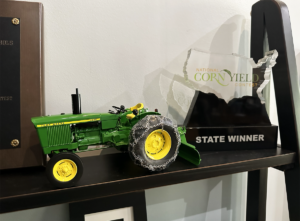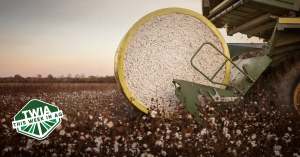All four faces on Mount Rushmore are farmers. Along with being the father of our country, George Washington was a father of regenerative agriculture, implementing intense crop rotation (he grew 60 different crops), cover crop practices, manure management, and grazing from multiple livestock species on his 8,000-acre Mt. Vernon farm. Thomas Jefferson, considering himself “first a farmer,” pioneered contour farming across his Virginia hills and experimented with 170 varieties of fruits and 330 varieties of vegetables from around the world. Abraham Lincoln spent his youth as a frontier farmer, founded the U.S. Department of Agriculture, established land-grant universities and opened western migration with the Homestead Act. Teddy Roosevelt used his time as a Badlands rancher to transform his image from east coast tenderfoot into rugged cowboy, enabling him to capture the White House and become the greatest conservationist of all time, establishing 230 million acres of public lands.
Next Monday is Presidents’ Day, when the world’s greatest profession will be well represented. Out of America’s 45 different Commanders in Chief, over one-third are linked to farming. This includes four of the first five. That makes sense, as in the early days, wealth and influence were often closely linked to land ownership. The most recent full-time farmer to lead the free world was Jimmy Carter, who grew peanuts on his Plains, Georgia, farm. Serving as POTUS can be a demanding and nerve-wracking duty. Connecting with nature can provide sanctuary. Presidents Ronald Reagan and George W. Bush would often opt for their ranches over Camp David. President Johnson was famous for his frequent phone calls to his beloved LBJ Ranch to check rainfall totals and advise on ranch operations. Perhaps the greatest Presidential quote about farmers came from a man raised in the elite circles of Boston, who rarely stepped foot on a farm. John F. Kennedy showed his understanding by saying, “The farmer is the only man in our economy who buys everything at retail, sells everything at wholesale, and pays the freight both ways.”
Sino-US relations keep getting complicated. And ag policy is no exception. China is America’s largest trading partner for food products, exceeding $40 billion annually. From pecans to pork, tariff talks are on the minds of many US producers. Laws banning Chinese ownership of US farmland have been enacted in 14 states; about two dozen other states have introduced similar legislation. Arkansas has ordered Chinese-owned Syngenta to divest its research farms from the Natural State. And now, if one US Illinois Congresswoman has her way, taxpayer funding of Chinese solar panels on “prime farm ground” across the fruited plain will be banned. Few in Congress represent a more fertile landscape than Rep. Mary Miller (Cory Ritter resides in her district). Rich, black Drummer silty clay loam soil – famously created by centuries of tall prairie grasses – runs feet deep throughout her entire district. This will be an interesting debate to follow, which is sure to gain support from many in power. While I was home over the Christmas holidays, just north of Rep Miller’s district, I noticed several solar panels erected near my hometown. We have been approached with lucrative offers, accounting for more than 3x the going rate for cash rent, to convert our family farm into a solar farm. We will continue to turn down any such offer.
On Thursday I have the privilege of speaking at the World Ag Expo in Tulare, California. I’ll be conducting an education session, “Breathe New Life into Your Soil,” alongside friends Wyatt Flory, general manager of New Mexico-based regenerative agronomy retailer Rio Gro, and Josh Bowman (someone who may end up on the Mount Rushmore of regen ag). Huma will be exhibiting at the show as well. Over 108,000 visitors (including our own Doug Greer, Nathan Smith and Nick Cardona) are expected to attend the world’s largest farm show, representing over 50 countries.
Related Posts

This Week in Ag #14
You never get a second chance to make a first impression. That popular saying could just as easily apply to planting corn. It’s impossible to recover from planting time mishaps. Don’t believe it? Try this. Walk into a cornfield where plants have recently emerged. Identify a plant that’s shorter than the rest (some call these

This Week in Ag #29
We all do it. We track time by referencing memorable items that we or our family once possessed. “Back when he drove that blue Silverado”, or “when she had that yellow Labrador” are examples of how we recall events that shaped our lives. For farmers, those points in time are often defined by a tractor.

This Week In Ag #99
Shopping with a farmer can be quite the experience. It’s one my mother refused to partake in during her entire 40-year marriage. This weekend, I went with my wife to exchange a pair of blue jeans that Santa brought me. As we were looking for my size, a clerk at Boot Barn suggested a different

